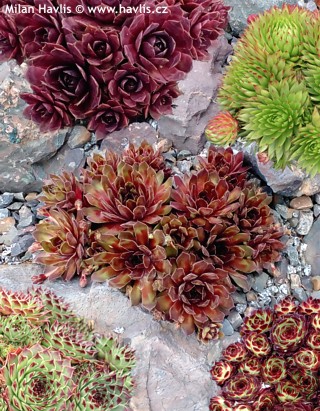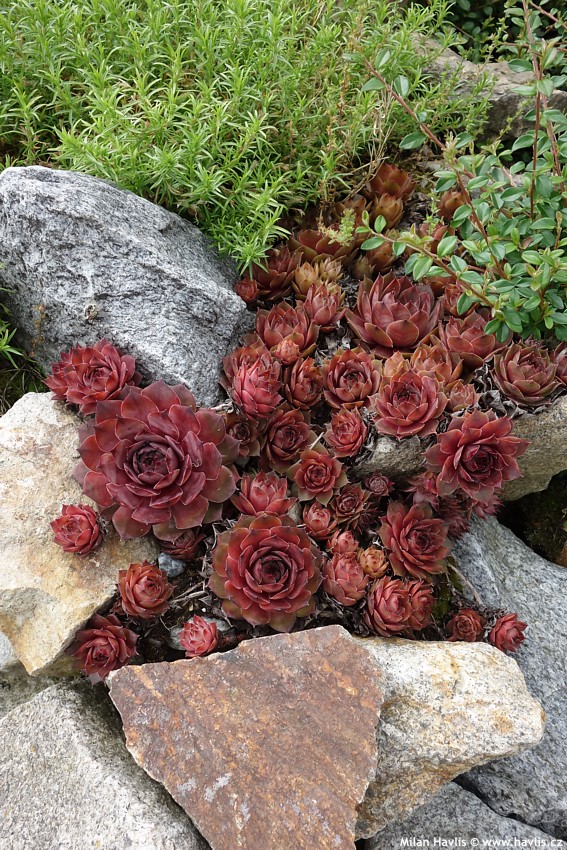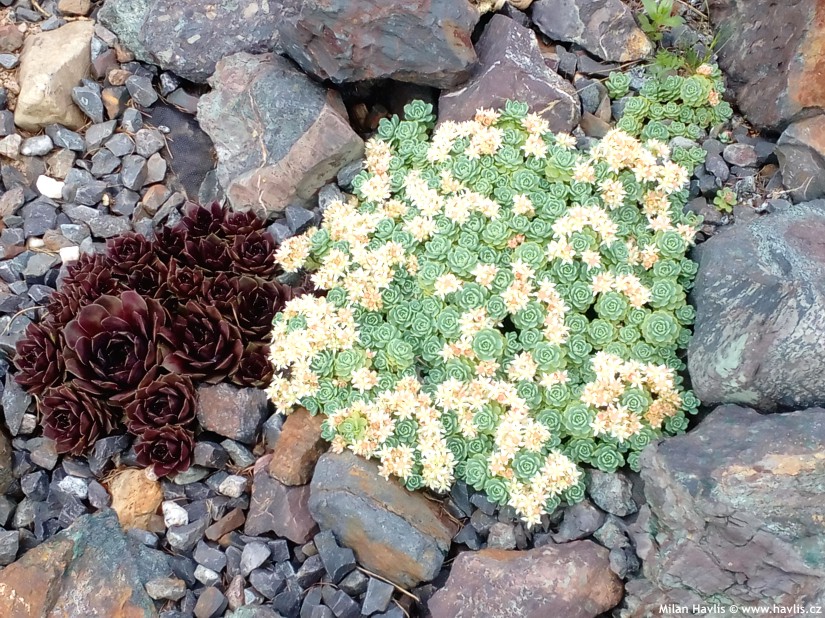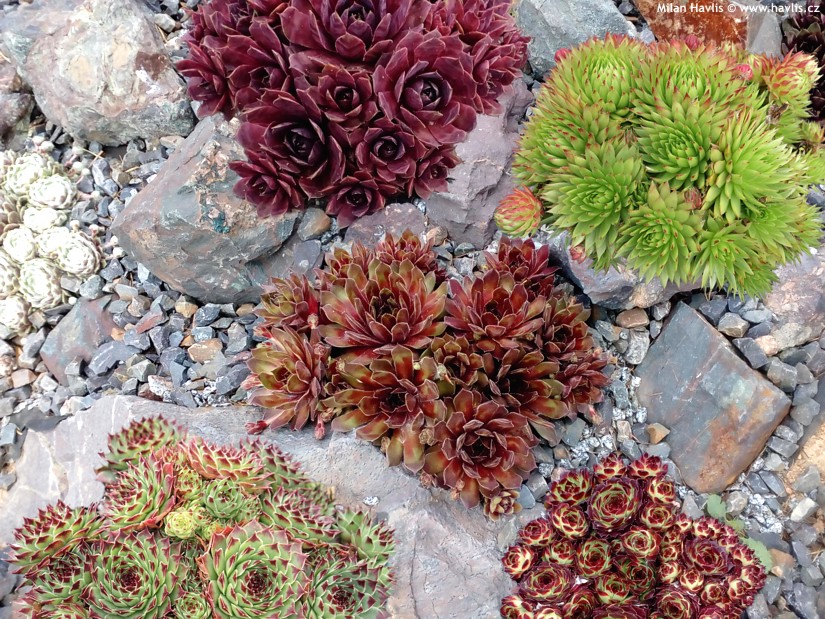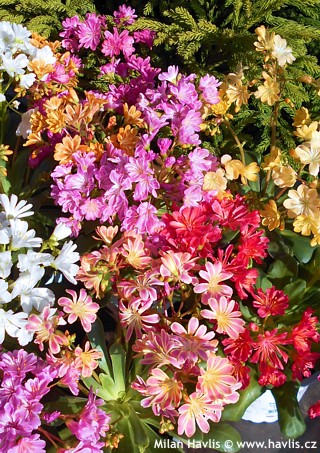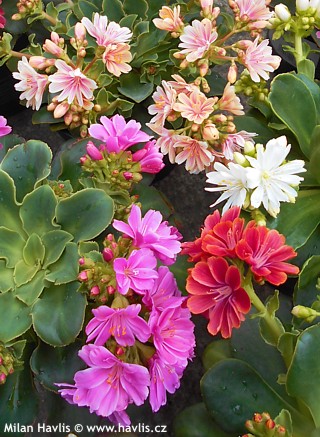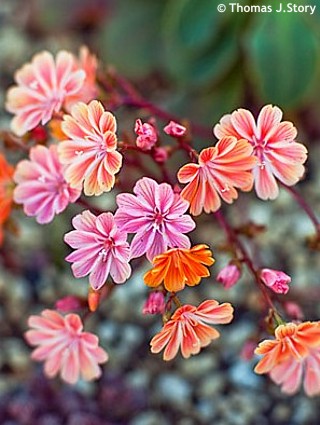Sempervivum, Jovibarba houseleek


Sempervivum,
When I was little, I mean really little like 4 or 5 years old, my aunt used take me out to her garden to adore the beauty of plants and flowers she had. Those were happy days and I would stay long hours outside exploring her beds and steeling buds of poppies, opening them in order to see what colour they were going to be, thus taking away their chance to eventually become the colour because of my stupid action. My aunt used to tell me off saying "Go do your bad to your own garden if that's what you're after". So I did. With a few kids from the neighbourhood we knew every stone around and we also knew that there were numerous pretty houseleeks growing on the cemetery stone fence. We nicked some and transplanted them into our mums' beds. All the other kids called it a day when the plants touched the soil, and went doing some other no good. But I stayed. It got my full attention and as the plants kept growing I demanded more square centimeters off my mum's bed in order to have space for new babies my houseleeks kept delivering. Even today I remember the joy it filled me with. And I think that these are my gardening roots, right then and there at the edge of my mum's bed with my humble collection of about 5 or 6 different varieties. So it is very obvious that this plant is on the menu of our nursery as well.Houseleek is so easy to grow. Just place your plant into gritty, sharp-draining soil in full sun and enjoy its happy life. No other needs. Fertilizing is possible if you want bigger plants and quicker spreading but is not necessary. Plants spread slowly by producing new spherical babies on thin wires which dry out as soon as the new plant touches the soil and is big enough to make its own roots. Houseleek is very hardy to about -34°C (USDA zone 4), though some species and varieties may be hardier or a little more tender than others.
Apart from specialist growers and collectors the current trade practise of most European suppliers is such that plants are sold in mixed trays, often without variety names. In order to differentiate them here, we list them by colour attaching a photograph of each plant so you can see what we are selling, and you can make an order for exactly the plant you want and see in the picture.
Last update 07-12-2016
Goods are shipped all over Europe. For Russia and U.K. and for further details please read about SHIPPING OPTIONS HERE.
Are you interested in a serious discount for orders NOV-FEB? Check your options here.
THE PRICES INCLUDE VAT of 15%. For quick conversion you can use 1 CZK = approx. 0.04 EUR
- STANDARD QUALITY - Plants of this group are 1st class quality with number of branches and overall density adequate to their size and age, considering they were container grown.
- DE LUXE QUALITY - This label guarantees a luxurious quality of manually selected plants that, compared to their height and age, are exceptionally dense and beautiful.
- EXTRA - These plants are usually mature and bigger specimens with exceptional overall appearance.
- STANDARD (as described in the plant form) means a tree with a trunk of 190-210 cm and a crown at the top, unless specified differently. The commercial size for trees is their girth measured in the height of 1m from ground.
- HOBBY - These plants are of the same quality as our standard-quality plants but younger and therefore cheaper.
- SHRUB - a woody plant with branches growing bushy from the ground level.
- HALF-STANDARD or MINI-STANDARD - a small tree with shorter trunk, its size is usually specified.
- FEATHERED - These are trees with branches growing already from the base of the trunk and up along the stem.
- GRASSES and PERENNIALS - Sizes given usually read the diameter of the pot or the clump, as specified.

































